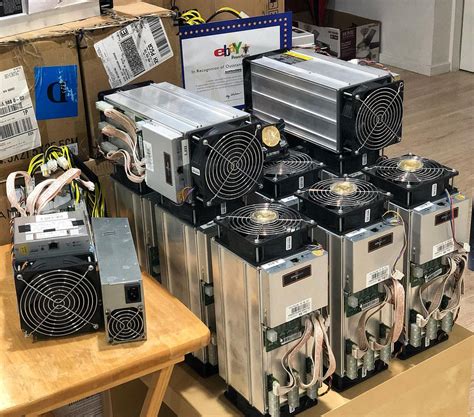Ethereum: Is Bitcoin mining already profitable?
In recent years, the world of cryptocurrency has recorded a significant increase in popularity, and many old coins and tokens have appeared on the spot. Among them was Ethereum (ETH) one of the most promising projects known for the decentralized intelligent contract platform and excellent acceptance. The aspect of extraction, which was under a microscope, is whether it is profitable or not. In this article, we will deal with the details of the profitability of the Ethereum mine and provide a comprehensive analysis to decide if it is worth time and effort.
Using the Bitcoin mining rental calculator, which takes into account the current block award, transactions, mining and much more fees and much more, it is difficult to generate enough ETH with most of the equipment available on the market (GPU, FPGA) to generate a sufficient ETH amount compensates for the production of energy costs electric. This applies in particular to the high costs of electricity related to mining, which can be from 0.10 to 1.50 USD per kWh depending on the location and energy supplier.
To put it in the right light, we look at a simple example. Suppose we want to reduce 100 ETH with one high -class GPU. With estimated electricity costs of $ 1.20 per kWh, it would take about 83 hours to reduce only this small amount of ETH. However, if the block reward is 10 ETH and fees for transactions of $ 0.05, we can estimate the mining profit at around $ 35. This is a relatively modest return on capital, especially because of the significant costs of electricity.
It should be noted, however, that the profitability of the Ethereum mine may vary significantly depending on several factors, such as: B.
- Equipment selection : The choice of equipment can significantly affect the efficiency of extraction. GPUs are generally more efficient in some applications than FPGA, but also consume more electricity. It is important to choose the right graphic processor and make sure that it meets the system requirements.
- Mining difficulty : When the network increases, the difficulty of mining increases and requires stronger equipment to maintain profitability. However, this can lead to a reduction in the margin of profit if the costs of electricity increases.
- Electricity costs

: High electricity costs associated with mining contribute to profitability. As already mentioned, these costs may vary significantly depending on the location and energy supplier.
- Interior of the network : On the profitability of mining, it can have a negative impact on network overload that occurs when the transaction network is overwhelmed. This can lead to a reduction in profit margins or even complete closures.
Let’s compare it with other popular cryptocurrencies to ensure a better idea of the profitability of Ethereum extraction. For example:
* Bitcoin (BTC) : The current block reward for bitcoins is 6.25 BTC per block. With estimated electricity costs $ 0.10 per kWh, a reduction in a single BTC would take about 8.33 hours.
* Litecoin (LTC) : The current block reward for Litecoin is 12.5 ltc per block. By assuming the same electricity costs as Bitcoin, Mining LTC would be about 4.67 hours on BTC.
In summary, the profitability of Ethereum extraction may vary significantly depending on several factors. Although it is possible to make profits thanks to high -class equipment and appropriate energy costs, strong electricity invoices related to extraction can quickly compensate for potential profits. To maximize profit, it is important to carefully assess the configuration of extraction, take into account the current market conditions and adapt the strategy accordingly.
Before you start disassembling ETH or other cryptocurrency, make sure you have carried out due diligence by examining the latest mining reconstruction computer, hardware comparisons and network overload analysis.


